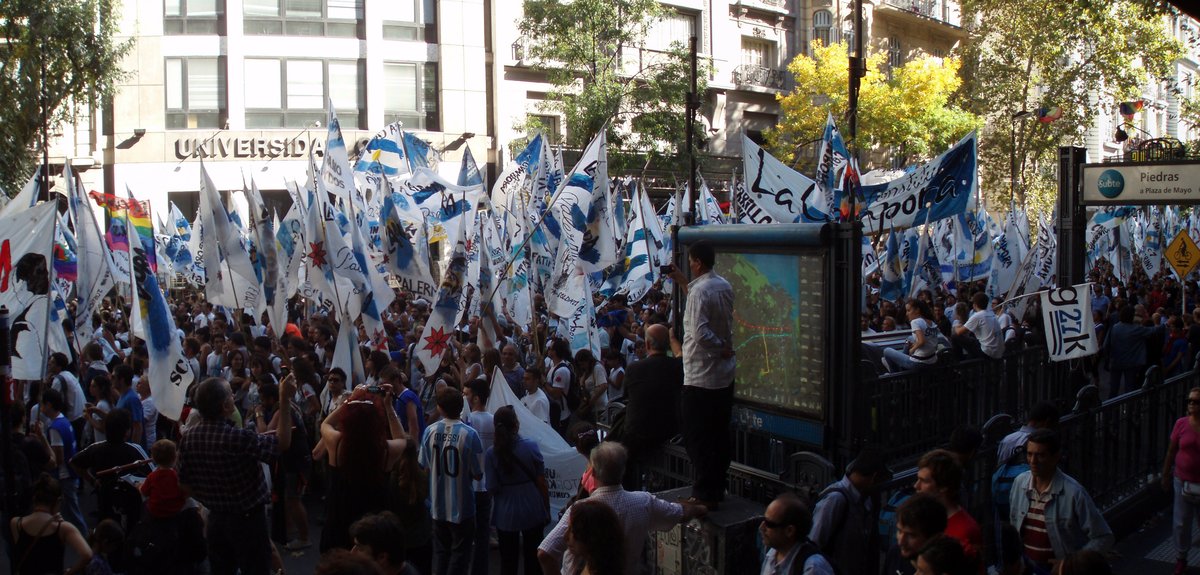
Visiting Piedras, Buenos Aires, Argentina: Complete Guide to Tickets, Hours, Attractions, and Experiences
Date: 15/06/2025
Introduction
Piedras, situated in the vibrant heart of Buenos Aires, is more than just a street—it is a portal to the city’s layered past and dynamic present. Set within the historic San Telmo and Microcentro districts, Piedras and its surroundings invite visitors to explore colonial architecture, experience world-renowned tango, sample celebrated Argentine cuisine, and immerse themselves in the city’s artistic and festive spirit. This guide offers essential information on visiting hours, ticketing, transportation, safety, accommodation, and local customs, ensuring every traveler can make the most of their Buenos Aires adventure.
For further planning and insights, consult resources on San Telmo’s history and attractions, the Buenos Aires Tango culture, and comprehensive visitor guides such as Becci Abroad’s San Telmo insights.
Table of Contents
- Introduction
- Historical Evolution of Piedras and San Telmo
- Cultural Significance and Identity
- Key Landmarks and Attractions Along Piedras
- Practical Visitor Tips
- Authentic Local Experiences in Piedras and San Telmo
- Visiting Hours, Tickets, and Tours
- Safety and Travel Tips
- Transportation and Accommodation
- Culinary Experiences
- Festive Events and Cultural Celebrations
- Frequently Asked Questions (FAQ)
- Visuals and Media
- Conclusion and Call to Action
- References
Historical Evolution of Piedras and San Telmo
Colonial Foundations and Urban Development
San Telmo, the city’s oldest barrio, was established by Spanish colonists in the 16th and 17th centuries. Its strategic location near the port made it a hub for commerce and daily urban life (Introducing Buenos Aires). The area flourished in the 18th and 19th centuries, attracting wealthy families who built grand colonial mansions and established the social and architectural character that endures today (Wikipedia: San Telmo).
Immigration, Epidemics, and Transformation
In 1871, a yellow fever epidemic prompted the exodus of affluent residents, leading to the conversion of abandoned mansions into “conventillos”—communal tenements for European immigrants (Las Maplone). This shift transformed San Telmo into a multicultural, working-class neighborhood, infusing it with the bohemian spirit seen today. Piedras Street became a living chronicle of these changes, showcasing a blend of restored 19th-century architecture and adaptive reuse.
Preservation and Cultural Renaissance
The mid-20th century threatened San Telmo with urban decay, but the creation of the San Telmo Antiques Fair in 1970 initiated a revival. Restoration efforts preserved architectural heritage, and the district emerged as a vibrant cultural center, home to galleries, theaters, and venues like Palacio El Victorial (Palacio El Victorial).
Cultural Significance and Identity
The Birthplace of Tango
San Telmo is intrinsically linked to tango. The dance emerged in the late 19th century among immigrant communities and quickly became a symbol of Argentine identity (Buenos Aires History & Culture). Today, the streets and plazas, especially around Piedras, host milongas and impromptu performances, allowing visitors to witness and participate in tango’s living tradition.
Artistic and Bohemian Spirit
The neighborhood’s creative energy is palpable, with antique shops, art galleries, and workshops lining the cobblestone streets (The Collector). Murals and street art narrate the city’s history, while venues like Palacio El Victorial blend classical architecture with innovative cultural programming.
Culinary Traditions
San Telmo and Piedras are celebrated culinary destinations, featuring traditional parrillas, bustling markets, and a growing scene of international and contemporary restaurants (Las Maplone). The San Telmo Market, founded in 1897, is a centerpiece for food lovers, offering everything from empanadas to artisanal cheeses (Buenos Aires History & Culture).
Key Landmarks and Attractions Along Piedras
- Palacio El Victorial: A 19th-century cultural center hosting art exhibitions, live music, and theater. Open Tuesday–Sunday, 11:00 AM–7:00 PM. Entrance is ARS 800, with discounts for students and seniors. Guided tours available (Palacio El Victorial).
- Plaza Dorrego: The second-oldest square in Buenos Aires and epicenter of the San Telmo Antiques Fair (Sundays, 10:00 AM–5:00 PM). Free entry, surrounded by historic buildings (Introducing Buenos Aires).
- San Telmo Market: Open daily, 10:00 AM–8:00 PM, with free admission. Features food stalls, antiques, and artisan shops (Las Maplone).
- Casa Minima: The city’s narrowest house, 2.5 meters wide, near Piedras.
- El Zanjón de Granados: Subterranean tunnels and ruins, open Tuesday–Sunday, 11:00 AM–6:00 PM. Tickets ARS 1500 (The Collector).
Practical Visitor Tips
Getting There and Around
- Subway: Piedras Station (Line A) is centrally located on Avenida de Mayo.
- Buses: Extensive network, SUBE card required for fares.
- Walking: The area is best explored on foot to appreciate its architecture and street life (Becci Abroad).
Safety
San Telmo and Piedras are generally safe, especially during the day. Stay alert for petty theft, particularly in crowded markets (Worldly Adventurer). Avoid isolated streets at night and keep valuables secure.
Accessibility
Many venues are accessible, though some historic buildings may have limited mobility access. The neighborhood is welcoming and inclusive, popular with LGBTQ+ travelers (Worldly Adventurer).
Authentic Local Experiences in Piedras and San Telmo
- Tango Performances: Attend a milonga or enjoy street performances in Plaza Dorrego (Buenos Aires History & Culture).
- Feria de Mataderos: Rural traditions, music, and cuisine, Sundays 11:00 AM–7:00 PM (Feria de Mataderos).
- Asado: Join a traditional barbecue experience at local parrillas (Authentic BA).
- La Botica del Ángel: Museum-theater with eclectic performances (La Botica del Ángel).
- Historic Tram Ride: Vintage tram tours in Caballito on weekends.
- Markets & Street Food: Sample empanadas, choripán, and dulce de leche at San Telmo Market.
- Café Culture: Don’t miss Café Tortoni, Argentina’s oldest café.
- Football: Attend a Boca Juniors match or watch at local bars (Authentic BA).
- Art & Murals: Explore vibrant street art in San Telmo and La Boca.
- Festivals: Enjoy tango festivals, art fairs, and food markets throughout the year (Buenos Aires Entertainment).
Visiting Hours, Tickets, and Tours
- Public Spaces: Streets and plazas are accessible 24/7.
- Museums & Cultural Centers: Typically open 10:00 AM–5:00/7:00 PM; check specific sites for hours.
- Tickets: Major museums and guided tours require reservations; many outdoor events are free.
- Guided Tours: Historical and themed tours available in English and Spanish, recommended for a deeper understanding of the area’s heritage.
Safety and Travel Tips
- Petty Theft: Carry valuables in front and be vigilant in crowds (Nannybag).
- Protests: Avoid large gatherings near Plaza de Mayo.
- Emergency Number: 911 for police, fire, or medical assistance.
- Travel Insurance: Strongly recommended for all visitors (The Broke Backpacker).
Transportation and Accommodation
Getting Around
- Subway “Subte”: Line A (Piedras Station) connects to major attractions. Operates approx. 5:30 AM–11:30 PM (Nomadic Matt).
- Buses: 24/7 service, SUBE card required.
- Taxis/Ride-Sharing: Use official apps or radio taxis for safety (Nannybag).
- Bike-Sharing: Ecobici system offers free or low-cost rentals (Gateway Travel).
Accommodation
- Hotels: Ranging from five-star luxury to budget hostels, many in Microcentro, San Telmo, and Recoleta.
- Apartments: Short-term rentals via Airbnb or local platforms.
- Hostels: Affordable options with social atmospheres (Map and Camera).
- Booking: Reserve in advance during peak seasons; flexible cancellation is advisable.
Culinary Experiences
Traditional Argentine Cuisine
- Parrillas: Sample grilled meats at renowned steakhouses such as Don Julio (World of Mouth).
- Classic Dishes: Milanesa, empanadas, morcilla, and provoleta are local favorites.
- San Telmo Market: Try artisanal cheeses, meats, and local wines.
Contemporary and International Dining
- Ácido: Creative Argentine cuisine with international flair.
- Quechua: Peruvian and Nikkei fusion.
- Aurelia Cantina: Mexican dishes and cocktails (World of Mouth).
- Girardi: Italian trattoria in San Telmo.
- Picaron: Latin American and Mediterranean-inspired small plates.
Sweet Treats and Cafés
- Café Tortoni: Historic café for desserts like churros and hot chocolate (Touropia).
- El Ateneo Grand Splendid: Bookstore café set in a former theater.
Food Tours
- Guided tours offer curated tastings at markets, bakeries, and parrillas (Secrets of Buenos Aires).
Festive Events and Cultural Celebrations
- Buenos Aires Tango Festival: August, features workshops and performances.
- Carnival: February/March, with neighborhood parades and music.
- National Holidays: Independence Day (July 9) and May Revolution (May 25) have ceremonies in Plaza de Mayo (Explore Your Bucket List).
- June Events: Festival Calesita and Bonfire of Saint Peter and Saint Paul (Time Out Buenos Aires).
- Live Music: Avenida Corrientes and venues like Ciudad Cultural Konex offer diverse concerts (Songkick).
Frequently Asked Questions (FAQ)
Q: What are the visiting hours for key sites?
A: Most museums and markets open from 10:00 AM to 5:00/8:00 PM. Public plazas are accessible at all hours.
Q: Are tickets needed for attractions?
A: Outdoor sites are free; museums and some cultural venues require tickets, often bookable online.
Q: Is Piedras accessible for visitors with disabilities?
A: Many sites are accessible, with ramps and elevators. Check specific venues for detailed accessibility info.
Q: What is the best way to get around?
A: Walking, subway (Line A), buses, taxis, and bike-sharing are all convenient.
Q: Are there major festivals or events near Piedras?
A: Yes—Tango Festival (August), Carnival (Feb/Mar), and national holidays feature public celebrations.
Visuals and Media
To enhance your planning, explore interactive maps and virtual tours from official Buenos Aires tourism sources. High-quality images of San Telmo’s architecture, street art, and culinary scenes are available online. Descriptive alt text, such as “Tango dancers in Plaza Dorrego” or “Colonial façades on Piedras Street,” helps bring the experience to life.
Conclusion and Call to Action
Piedras and San Telmo are living embodiments of Buenos Aires’ rich history and contemporary culture. From tango performances and colonial sites to culinary adventures and festive celebrations, this area offers something for every traveler. Ensure a seamless visit by planning ahead, reserving tickets, and embracing the local customs and rhythms.
Ready to explore Piedras and Buenos Aires? Download the Audiala app for guided tours, event updates, and exclusive travel discounts. Follow us on social media for more insider tips and inspiration.
References and Further Reading
- Introducing Buenos Aires: San Telmo
- Official Buenos Aires Tourism
- Nannybag: Buenos Aires Safety Guide
- World of Mouth: Best Restaurants in Buenos Aires
- Buenos Aires History & Culture
- Palacio El Victorial
- Becci Abroad: San Telmo Guide
- Las Maplone: Top Things to Do in San Telmo
- The Broke Backpacker: Buenos Aires Safety
- Casa Rosada Tours
- Secrets of Buenos Aires: Food Tours
- Touropia: Buenos Aires Attractions
- Songkick: Buenos Aires Concerts 2025
- Time Out Buenos Aires: Events Calendar
- Explore Your Bucket List: Is Buenos Aires Worth Visiting?
- Gateway Travel: Buenos Aires Guide
- Map and Camera: Buenos Aires Safety
- Authentic BA: Food and Football Tours
- Feria de Mataderos
- La Botica del Ángel






























































































































































